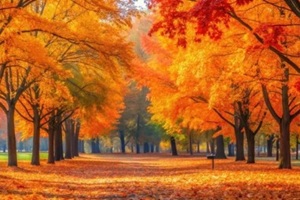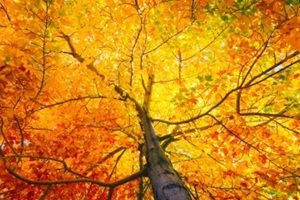
The legendary fall foliage in Virginia stems from its landscapes of assorted elevations and tree species. This combination allows the color changes to stagger from the mountains in the southwest to the coastal cities in the east, creating a ripple effect that artificially extends the time that fall seems to last. Visitors are able to travel across the state through the whole autumn season without ever leaving the peak fall colors behind.
Knowing how timing, geography, and tree species impact fall foliage in Northern VA and across the state allows visitors and residents alike to experience the best that fall has to offer. This article examines the long, beautiful falls in Virginia, including the best vacation strategies to see it at its peak.
How to Time Fall Colors in Virginia
Virginia’s lush deciduous forests offer lively greenery throughout the summer. As the trees move into the fall, they transform at different times into the colorful assortment of red, orange, and yellow that becomes the iconic feeling of Virginia autumn.
The start of the fall season is in the mountains of southwest and northern Virginia, beginning in early October when the first reds of the season can be seen in the dogwood and black gum trees. As the tulip-poplars turn yellow and the beeches go from yellow to orange, red maples begin to show their deep orange and brilliant red hues. This lasts through October, staggering across the state toward the coastal regions to the east.
As the hickory trees finish showing off their lively golds, the last hold-outs for the fall season are usually the oaks. They cling to their green the longest and are the last to transform into a deep red or burgundy backdrop for the start of winter, which they can do as late as early November.
For Virginia residents and visitors alike, this staggered transformation affords far more time to see the peak fall foliage compared to other states. However, elevation is not the only factor, as weather can also play a role. The sunny days combined with cool nights often bring out reds while droughts can cause premature yellowing. In particularly dry years, the typical yellow leaves from tulip-poplars and beeches can turn early and fall from the wind and rain before the peak of autumn settles in.
Fall Foliage Travel Schedule

To help people see the most of what fall has to offer across Virginia, we created this generalized timeline to give an idea of where the peak fall foliage will be throughout the season:
October 1-15
In the opening weeks of fall, the mountain regions such as Blue Ridge Parkway and Shenandoah National Park often reach full color. Especially in elevations higher than 2,500 feet, where the red and orange tones will arrive first. Drives in these regions are the most scenic in the first half of October when this transformation is at its early peak.
October 15-25
Peak fall moves toward the central regions of Virginia in the later weeks of October as the autumn transition spreads to the hardwood forests where maples, hickories, and sweetgums begin to change. This is the time to be around Charlottesville or near Loudoun County to follow the peak fall foliage into its later stages.
October 25-November 5
The last leg of Virginia’s extended autumn can stretch as late as the first week in November when the lower elevations get their yearly transformations. Virginia Beach, Norfolk, and other eastern coastal regions will start getting later fall colors in their sugar maples, oaks, and sweetgums. Even as the inland and northern forests begin to fade into winter, these regions will still have lively forest and park spaces to mark the end of the fall.
Tips for Planning Peak Viewing
Follow these simple tips to catch the fall foliage at its best in any region of Virginia:
- Download apps and check websites with foliage updates by elevation, including the Virginia Department of Forestry (DOF) and the Virginia Fall Foliage Prediction Map.
- Try to plan weekday visits since popular fall destinations like Shenandoah Park can be crowded on weekends.
- Think about how lighting will impact the view by planning for mid-morning and midday visits, when the sun best displays the fall colors without being too harsh.
- Plan for temperature shifts or possible weather changes, especially in the mountains, that become more pronounced as fall progresses.
- Mix driving with hiking for the best views by checking out popular trails like Dark Hollow Falls while also planning for scenic drives with uninterrupted forest views through Blue Ridge Parkway or Route 211.
Visitors can strive to create the perfect fall trip, but Virginia’s long autumn season and assorted foliage mean there’s no wrong answer to planning a trip to see peak foliage anywhere in the state.
Partner with Treecare Experts to Learn More About Fall Foliage in Virginia

Fall foliage defines Virginia in many ways, both for visitors hoping to see its peak colors and for property owners who strive to take advantage of an assortment of tree species to increase their curb appeal. At RTEC Treecare, we inform visitors and residents alike of Virginia’s differing and beautiful fall foliage to help them experience it to its fullest.
Contact our experts today to learn more about fall foliage in Northern Virginia, including how strategic tree removal and planting services can be used to customize your property for maximum fall foliage.


